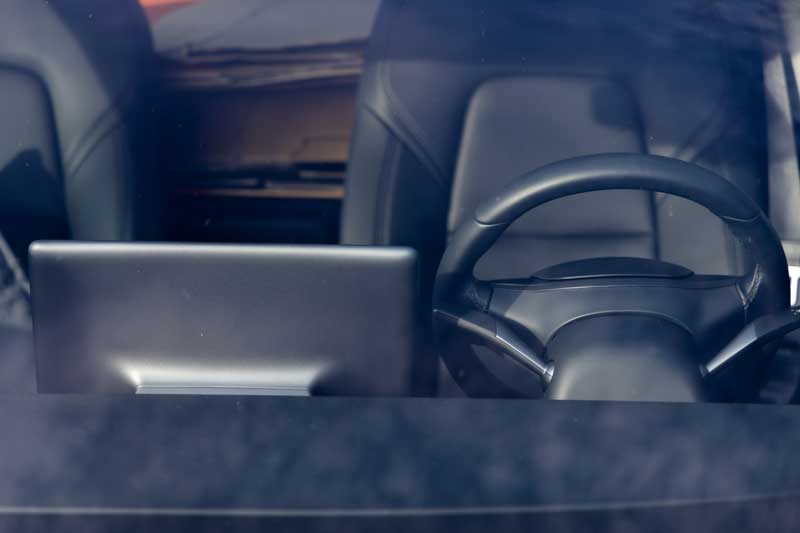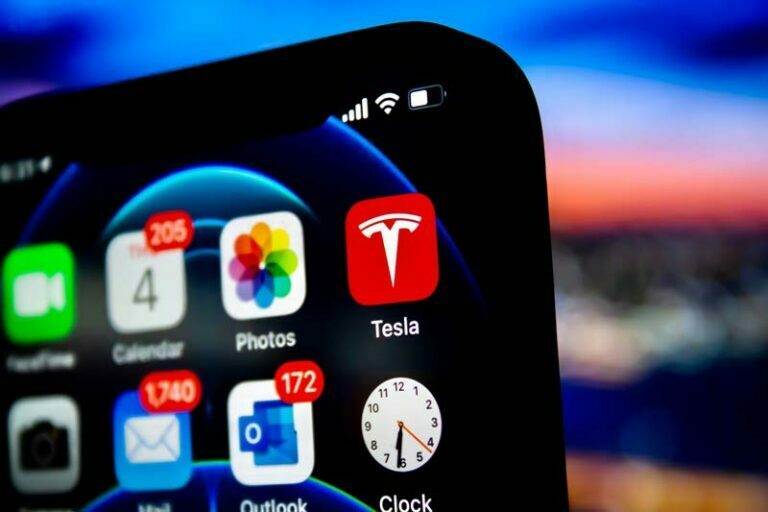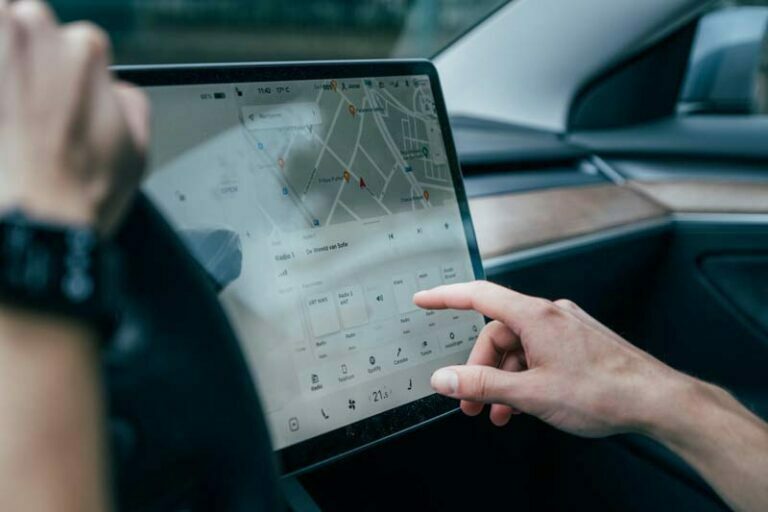As car manufacturers innovate new technologies, their reliance on electronics becomes increasingly significant, and the Tesla Model 3 is no exception. Just like any electronic device, you may encounter glitches with this one which requires a reboot or power cycle.
This article will explain the GPU reboot process as well as potential issues a reboot can fix. I’ll also tackle other ways to reboot your Tesla Model 3 if the GPU reboot doesn’t fix the problem.
How To Do A GPU Reboot in 3 Steps
A GPU reboot refers to a process where the vehicle’s graphical processing unit (GPU) is restarted. The GPU is responsible for handling graphics-related tasks and rendering the visual interface on the car’s display screen.
Sometimes, Tesla owners may encounter software glitches or issues that can cause the display screen to freeze, become unresponsive, or exhibit abnormal behavior. In such cases, a GPU reboot can be performed as a troubleshooting step to resolve the problem.
To initiate a GPU reboot, the driver or owner can follow a specific sequence of actions, as described below.
When a GPU reboot is triggered, the vehicle’s system will restart the GPU and reload the necessary software components, effectively clearing any temporary issues or glitches that might have been causing the display or graphics-related problems.
It’s important to note that a GPU reboot does not affect the driving functionality of the vehicle, as it primarily focuses on resetting the graphical interface.
A soft reboot is the most basic way to restart your Tesla, and it’s always a good idea to do this before attempting to reset the other systems of the car. This type of reset allows your Tesla’s software to reboot without affecting the car’s onboard electronics.
In most cases, a soft reboot can fix issues such as music not playing, Bluetooth not connecting, or the touch-screen freezing.
1. Put the Tesla Model 3 in Park
A GPU reboot, also known as a soft reboot, will only restart the infotainment system and can technically be done while driving. However, you won’t hear your turn indicators or see vital driving information – such as speed – while the reboot occurs. For these reasons, I strongly recommend keeping the vehicle in Park.
On a similar note, check out this somewhat related article I wrote called: “Tesla Center Display Unavailable“. You’ll know exactly how to resolve this issue as well.

2. Press Steering Wheel Controls Until the Screen Shuts Down
The next step involves pressing the buttons on both the left and right sides of the steering wheel simultaneously. After 10 seconds, your infotainment screen should shut down.
Don’t be alarmed if you see your airbag light come on; this is perfectly normal.
3. Wait for Tesla Logo To Appear To Confirm the Reboot Is Complete
After the infotainment screen shuts down, it should take about 30 to 40 seconds for the Tesla logo to appear. Once you see the logo, the screen should come back on, which means the GPU reboot is complete.
Performing a Full Vehicle Reboot
If the problem persists after performing a soft reboot, you may want to do a full reboot, also known as a power cycle. A full reboot will restart both the infotainment system and the car’s central processing unit.
Your vehicle needs to be parked to do a power cycle since it’ll restart most of the car’s electronic systems, temporarily disabling them. This reboot typically addresses more severe issues such as unusual vehicle behavior or unidentifiable vehicle alerts.
There are two ways to do a power cycle. Below are the steps for both methods.
Method 1
- Shut all the doors. Then, place vehicle in park
- Go to Controls > Safety & Security on your infotainment system, then tap the Power Off button. This step will cause the electrical systems to shut down, so expect the touch screen and lights in the vehicle to turn off.
- Don’t interact with the vehicle for at least 5 minutes. Moving the doors, brakes, steering wheel, or any other part of the car may disrupt the reboot. It may only take 2 minutes for the power cycle to complete, but it’s best to wait a little longer to ensure all the systems finish rebooting.
- After 5 minutes, wake the vehicle up by either stepping on the brake pedal or opening the door. Your car will be ready to drive as soon as all the systems are back on.
Method 2
- Shut all the doors.
- Place the vehicle in park.
- Depress and hold the brake pedal, then depress and hold both steering wheel controls.
- Keep the brake pedal and steering wheel controls depressed until the system turns on. This process may take up to 2 minutes.
Please note that it’s best to perform a reboot in an isolated area because it can be interrupted if any movement triggers Sentry mode.

Performing a Hard Reboot: Tesla
If you still experience issues after a full reboot, you may need to perform a hard reboot. Hard reboots typically address problems like the vehicle refusing to push through with an update or persistent error codes.
A hard reboot involves disconnecting the 12-volt battery, which will reset your vehicle’s systems, allowing all the electronics to discharge before reconnecting the battery again.
I strongly recommend having a Tesla service technician perform this procedure as it involves working closely with your vehicle’s high-voltage equipment. Any errors can result in a voided warranty, injury, and even death.
If you’ve exhausted all other means to reboot your car and a Tesla service center isn’t accessible, you can perform a hard reboot yourself, but please do so with extreme caution.
Here are the steps for performing a Hard Reboot.
- Turn off the climate control system. Fully open the driver’s side window to ensure you don’t get locked out in case you need to reenter the vehicle while the reboot takes place.
- Go to Controls > Safety & Security on your infotainment system. Then, tap the Power Off button to switch the car off. Open the frunk.
- Remove the top panel that has the windshield wiper fluid cap. Use a 10mm (0.39 in) socket wrench to disconnect the battery.
- Keep the terminals away from the battery poles. Open the passenger side of the back door. Secure all rear seatbelts by fastening them to prevent you from having to look for them later.
- Lift the rear seats by pressing the release button underneath. Remove the foam block for the wiring harness. Then, rotate the connected lock and disconnect and unplug the header for the wiring harness
- Allow 5 minutes for all the systems to discharge. 2 minutes may suffice, but again, it’s best to wait longer to ensure a complete reset. Reconnect everything in reverse order (steps 12 to 5) and switch the vehicle back on.
Here’s a helpful YouTube video from Tech Forum on disconnecting power from the Model 3:
Refer to this table for when to use each reboot:
| Type of reboot | Soft Reboot | Full Reboot | Hard Reboot |
| Coverage | Infotainment system | The infotainment system and CPU | All vehicle electronics |
| Issues | Music not playing, Bluetooth not connecting, Infotainment screen freezing | Vehicle not behaving properly, unidentifiable error codes, or any issues soft reboot fails to fix | Persistent error codes, vehicle refuses to push through with an update, or any issues full reboot fails to fix |
| Required Time | 1 minute | 5 to 7 minutes | 15 to 20 minutes |
What To Do if You Have Trouble Rebooting Your Tesla
There may be instances when your Tesla seems to be unable to reboot successfully. If you encounter this problem, you may want to check the following:
- Remove any USB devices from any of the ports. USB devices may keep the infotainment system from shutting down as it receives data from the flash drive.
- Turn Sentry mode off using voice commands or through your infotainment screen or mobile app. Your surroundings may trigger Sentry mode, causing an interruption in the reboot process.
- Ensure there are no devices connected to the infotainment system via Bluetooth. To be sure, disable Blueyooth on both your car’s infotainment system and mobile devices.
- Reset your trip computers. Go to Controls > Trips, and press reset.
- Delete saved locations from your GPS. Do this by going to the Navigate menu and swiping right to delete the location.
If you still have difficulty rebooting, contact a Tesla Service Center for assistance.
Other Common Tesla Model 3 Issues That a Reboot Won’t Fix
More often than not, a reboot will take care of most of the glitches you encounter with your Tesla. However, you may experience other problems that require a different remedy.
Below are other known issues you might have with your Model 3 and how to solve them.
Key Card Not Detected
Many Tesla Model 3 owners use their mobile phones to lock and unlock their cars. However, there may be instances where the car asks for a keycard before letting you drive on.
If you encounter this problem and have a key card on you, simply tap it on the center console to continue driving.
For cases where you don’t have a key card with you, one of the following should resolve the issue.
- Restart Bluetooth.
- Relaunch the Tesla App on your mobile device. There are instances where your phone automatically shuts it down.
- Remove the phone key. Delete then add the phone back to the car’s lock settings. (you need at least one other active key to validate this process).
Bluetooth Keeps Disconnecting
You may encounter an issue where your Bluetooth keeps disconnecting or has trouble automatically disconnecting.
If a reboot fails to solve this issue, you can try doing any of the following:
- Reconnect your Bluetooth connection manually.
- Set your phone as the priority device. The car might be trying to connect to other devices within range without setting a priority.
- Turn off Sync-Contacts. There are cases where special characters in your phonebook affect the Bluetooth connection.
WiFi Keeps Disconnecting
If your car has poor WiFi reception compared to other mobile devices within proximity, try doing the following:
- Select the ‘Remain Connected In Drive’ option under WiFi settings.
- Switch WiFi signal to 2.4GHz to get a more stable and reliable connection. 2.4GHz isn’t as fast as a 5GHz connection, but it may be better to prioritize stability when downloading an OTA.
- Turn on Sentry Mode. Sentry mode prevents the WiFi from disconnecting when the vehicle goes into sleep mode.
- Use your phone as a hotspot. The easiest way to sustain a good WiFi connection is by using your mobile phone as a hotspot.
If you’d like to find out if your Tesla can be a WiFi Hotspot and all the features included, then check out this related article that I wrote.
How To Restart Tesla
To restart a Tesla vehicle, you have to do a reboot as described above. To summarize, you can follow these general steps:
- Bring the vehicle to a complete stop: Ensure that your Tesla is parked in a safe location and that you have stopped the vehicle.
- Put the vehicle in “Park” mode: Shift the gear lever to the “P” (Park) position. This step is important to ensure the safety of the restart process.
- Initiate the restart: Depending on your Tesla model and software version, you can try one of the following methods to restart the vehicle:a. Soft reset (also known as a touchscreen reset):
- On the vehicle’s touchscreen, tap the Tesla “T” logo located at the top center of the screen.
- A menu will appear. Tap on “Controls.”
- Scroll down and select “Safety & Security.”
- Finally, tap on “Power Off.”
- On the vehicle’s touchscreen, tap and hold both the two steering wheel buttons (scroll wheels) simultaneously for a few seconds.
- Continue holding the buttons until the Tesla logo appears on the touchscreen. The car’s system will then restart.
- Wait for the restart process: The screen will go blank, and the vehicle’s systems will shut down and then power back on. This process may take a minute or two.
- Confirm the restart: Once the Tesla logo appears on the touchscreen and the vehicle’s systems are back online, the restart is complete.
Check out these 20 great gift ideas for yourself or a Tesla fanboy.
Contact Us if you have any questions or queries.








